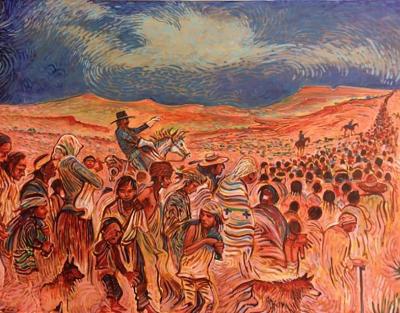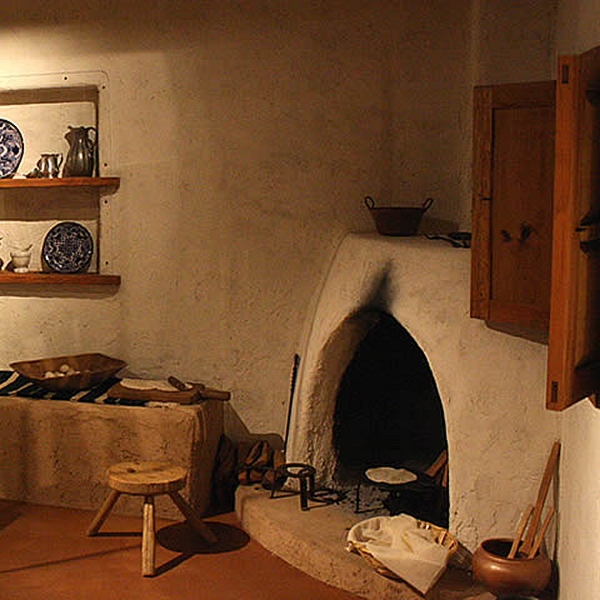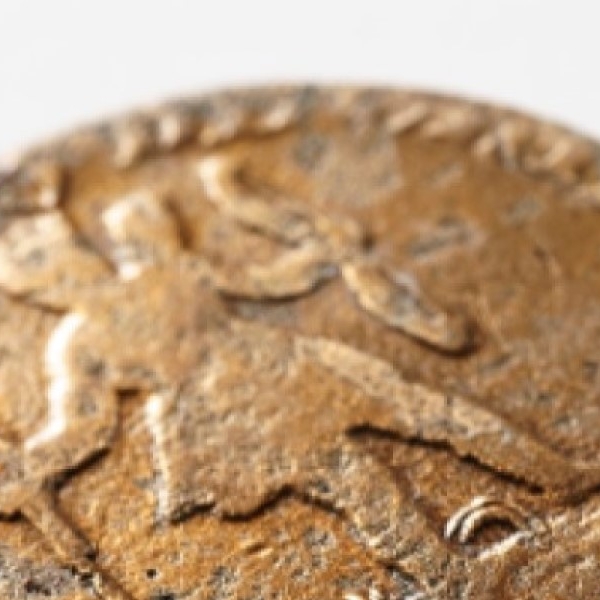New Mexicos Bosque Redondo Memorial Commemorates 150th Anniversary of the Treaty of Bosque Redondo & Formation of the Navajo Nation
March 23rd, 2018
(Fort Sumner, New Mexico) – This summer marks the 150th anniversary of the signing of the Treaty of Bosque Redondo between the United States Government and the Navajo Nation. This anniversary will be commemorated through a series of events at the Bosque Redondo Memorial at Fort Sumner Historic Site in eastern New Mexico. Ceremonies June 8 & 9, 2018, will mark the 50th anniversary of the establishment of this important site and the 150th anniversary of the Treaty of 1868.
Patrons will be able to view plans for the new upcoming exhibit, participate in our ceremonial activities and enjoy tribal dances. Native artisans will be on-site offering traditional jewelry, weavings and foodstuffs. On June 9, a seven-mile walk from the historic site to Fort Sumner High school will honor the memory of The Long Walk
The Bosque Redondo Memorial interprets the forcible removal of the Navajo and Mescalero Apache from their homelands and their internment on the Bosque Redondo Reservation. The Bosque Redondo Memorial solemnly remembers the dark days of suffering from 1863 to 1868 when the U.S. Military persecuted and imprisoned 9,500 Navajo (the Diné) and 500 Mescalero Apache (the N’de) on a reservation encompassing 1,600 square miles (more than 1 million acres).
Bosque Redondo is an International Site of Conscience, one of 175 in the United States. Established in 1999, the International Coalition of Sites of Conscience http://www.sitesofconscience.org honors the need to remember which often competes with the equally strong pressure to forget. Even with the best of intentions – such as to promote reconciliation after deeply divided events by “turning the page” – erasing the past can prevent new generations from learning critical lessons and destroy opportunities to build a peaceful future.
As a member of the International Coalition of Sites of Conscience, the Bosque Redondo Memorial preserves the memory of those dark days of suffering from 1863 to 1868 when the U. S. Army removed the Navajo and Mescalero Apache from their respective homelands and forcibly confined them to the Bosque Redondo Indian Reservation. Approximately 9,500 Navajo (Diné) and 500 Mescalero Apache (Shis N’de) endured long years of deprivation, disease and death during their exile on this desolate reservation—where they were held as ‘prisoners of war.’
The experience of the Long Walk to and confinement at Bosque Redondo comprises one of the most tragic episodes in the long and sordid history of this nation’s treatment of Native Americans. However, the overriding theme of the Bosque Redondo Memorial is one of survival and triumph of the human spirit. The memorial celebrates these two cultures, Navajo and Mescalero Apache. The story of Bosque Redondo is ultimately the story of their courage, endurance and dignity in the face of extreme hardship and isolation. Their strength and resilience allowed them to emerge from Bosque Redondo as the proud people and respected citizens they are today.
“The Memorial at Fort Sumner looks into the Navajo and Mescalero Apache cultures and traces the history of the events that led to their terrible incarceration at Bosque Redondo, their incredible survival, and emotional return to their respective homelands,” said Aaron J. Roth, director of the Bosque Redondo Memorial. “Tours at the site remember the Navajo and Mescalero Apache incarcerated here, the important key events that wrote the history of Bosque Redondo as well as the triumphant reemergence of the Navajo Nation and the Mescalero Apache celebrating their resilience and their future.”
About New Mexico Historic Sites: http://nmhistoricsites.org/ On March 14, 1931, the New Mexico Historic Site system was established by an Act for the Preservation of the Scientific Resources of New Mexico, to "declare by public proclamation that historic and prehistoric structures and other objects of scientific interest that are situated upon the lands owned or controlled by the State of New Mexico, shall be state monuments, and may reserve as a part thereof such parcels of land as may be necessary to the proper care and management of the objects to be protected." Under the direction of the New Mexico Department of Cultural Affairs, six sites are open to the public: Coronado, Fort Selden, Fort Stanton, Fort Sumner Historic Site/Bosque Redondo Memorial, Jemez, and Lincoln. The Los Luceros Historic Property is open to the public during scheduled events and by appointment (505) 476-1130.
In 2004, the J. Paul Taylor Family bequeathed the Barela-Reynolds House and Property on the Mesilla Plaza to the Department of Cultural Affairs. Still serving as J. Paul Taylor’s private home, the property will become a Historic Site after his passing. Events, news releases and images about activities at New Mexico Historic Sites, and other Department of Cultural Affairs divisions can be accessed at media.newmexicoculture.org.
The History of Bosque Redondo: In 1862, as a result of the Civil War, Brigadier General James H. Carleton arrived in New Mexico at the head of the California Column, a force of 1,500 volunteers. Carleton was the protégé and longtime friend of General Edwin Vose Sumner (one of the highest-ranking officers in the Union Army at the time). He immediately assumed command of the Military Department of New Mexico, replacing General Edward Canby. Carleton arrived too late to have any significant role in defeating the Confederate invasion of New Mexico, a circumstance which greatly frustrated this ambitious officer. The California soldiers were kept in the West to guard against any renewed effort by the Confederates to capture the goldfields of Colorado or California by way of New Mexico. This meant that Carleton, as their commanding officer, was denied a more important role in the war being fought back east. Surveying his new command, Carleton decided that, if there were no Confederates to fight, then he should seek out new enemies to engage.
He had been stationed in New Mexico during the 1850s. In 1855, he scouted the site of a new fort that was established in the heart of the Mescalero Apache homeland. This new post was named Fort Stanton. Carleton knew that, if attacked, the Apache and Navajo would fiercely defend their families and their lands. In fact, he was counting on it. During the late summer and fall of 1862, he conceived plans for a series of military campaigns aimed at driving the Mescalero Apache, Navajo and other Native Americans from their homes. He claimed that he was forced to act in response to Indian depredations, and raids on the settlements in New Mexico certainly occurred from time to time. Such raids had occurred, off and on, for more than two hundred years.
However, Carleton’s plan of operation belies his claim of provocation. He sent his soldiers first to southern New Mexico for campaigns against the Mescalero (southeast) and Warm Spring Apache (southwest). Once those were largely complete, he proceeded to launch a major campaign against the Navajo (northwest) and finally in 1864 he attacked the Comanche (northeast). In other words, he deployed his forces in a series of campaigns that described a large clockwise circle around the frontiers of New Mexico. He initiated hostilities against the Apaches and Navajos, not vice versa. As soon as these campaigns were underway, he also established Fort Sumner on the banks of the Rio Pecos in eastern New Mexico. This fort would serve as a supply and control point for the Bosque Redondo Indian Reservation (1,600 square miles of sandstone mesas, thorny mesquite and short-grass prairie).
On Sept. 27, 1862, General Carleton met with Colonel Christopher ‘Kit’ Carson at Fort Marcy in Santa Fe. Carleton informed Carson that his first priority was defeating the Mescalero Apache. He ordered Carson, with five companies of his First New Mexico Volunteers, to reoccupy Fort Stanton as soon as possible. At first, Carleton gave Carson free reign to conduct the campaign against the Mescaleros any way he wished as long as the Apaches were soundly beaten. Then, on his way south, Carson received written orders to pursue and kill all Apache men whenever and wherever they were found. He was to take women and children captive and have them taken to Fort Sumner.
Thus, New Mexico Volunteers, under Carson’s command, pursued, killed and captured the Apache wherever they went. Among those captured was a Mescalero Apache chief named Cadete, who was ushered to Santa Fe for peace talks. Cadete appealed to the general to end the campaign and expressed his strong desire for peace, but Carleton told Cadete that “if he desired to avoid a collision with our troops, he must withdraw his people, with all their effects, from the country occupied by the tribe and cease to have communications with it.” Further, he told Cadete that his troops would continue to attack the Mescaleros until they agreed to migrate to the new reservation he had planned at Bosque Redondo. Facing the threat of further punishment by Carson and his soldiers, Cadete submitted to Carleton’s terms and agreed to bring his people in to surrender.
The Mescalero Apache were the first Native Americans to arrive at Bosque Redondo. In January 1863 nearly 500 Mescalero Apache were forced to leave their homeland and driven into exile at Fort Sumner, 100 miles away. The Mescalero Apache were a nomadic society, who had occupied the mountains of southeastern New Mexico and western Texas for centuries. They traveled seasonally, harvesting wild plants and hunting wild game. But they had also cultivated small farms during the 1850s at the direction of their Indian Agent Dr. Michael Steck.
On Feb. 1, 1863, Carleton reported to Washington that “the Mescalero Apaches had been completely subdued.”
Having defeated the Apaches, General Carleton turned his attention to solving the “Navajo problem” and again enlisted the help of Kit Carson. The Navajos were large in number; their country was vast and physically challenging; and they had a legendary ability to evade their enemies. Carson knew that he would fail unless he had experienced guides and trackers familiar with Navajo ways. Thus, he employed 100 Utes as scouts and made use of Pueblo and Hopi auxiliaries in support of his operations.
On June 15, 1863, Carleton issued an order to Carson to attack the Navajo “...until it is considered at these headquarters that they have been effectively punished for their long-continued atrocities.”
During the winter of 1863-1864, Carson’s New Mexico Volunteers, aided by Indian scouts and allies, ravaged the Navajo countryside, killing Navajos, burning crops and orchards, killing livestock, destroying homes and contaminating vital water sources. This ‘scorched earth’ campaign of Carson’s was “designed to starve the Navajo into submission” and is aptly called by the Navajos “The Fearing Time.” With no surplus of food, and nowhere left to hide, many Navajos surrendered at Fort Defiance and were forced to march to the Bosque Redondo Reservation, some 400 miles away.
Between the summer of 1863 and December 1866, approximately 10,500 Navajos began the Long Walk to Fort Sumner. They did not travel as one large group, but instead were escorted by the military in 53 separate marches. It is estimated that more than 1,500 Navajos died on the “Long Walk” and that another 1,500 died during their four-year exile at Bosque Redondo.
Supplying the Bosque Redondo Indian Reservation with enough food and other necessary items proved to be much more challenging than Carleton had anticipated. The first prisoners arrived at the fort less than a month after it was established. By March 1863, there were over 400 Mescalero Apache on the reservation. By the end of 1864, they would be joined by more than 8,500 Navajo. The fort itself had a population of around 500 soldiers and civilians, and thus the overall population was close to 10,000 people. Never in the history of New Mexico had so many people been gathered together in one place. Carleton had estimated that the combined population would be about 5,000. Providing food, water, and shelter to so many people so far from any significant point of supply would prove to be nearly impossible. Yet Carleton stubbornly refused to admit that he had made a mistake by implementing his “Bosque” policy.
Ultimately, the “Bosque” policy would fail, but it wasn’t for lack of effort on the part of the Navajo and Apache. After all, the survival of their families was at stake. Work around the fort was constant. The Apache and Navajo were expected to clear fields for farming and help build the fort while at the same time providing food, shelter and firewood for their own families. Navajo men dug an irrigation ditch, called an acequia madre in New Mexico, which was more than 6 miles long, at least 4 feet deep and 10 feet wide. They also built an earthen dam across the Rio Pecos to divert water into the ditch. They did this work with no more than a few axes, hoes, picks and shovels for tools. The Mescaleros particularly resented the fact that cornfields that they had planted and cared for were taken away by the soldiers and given to the Navajos just before harvest without any explanation or compensation. Indeed, the Navajo and Mescalero Apache usually kept their distance from each other on the reservation. While they spoke related languages, their cultures and histories were different. The Army played upon these differences whenever possible, setting one against the other.
Life at Bosque Redondo for both the Mescalero Apache and Navajo people was miserable. They had no clean water because the Rio Pecos was full of alkaline minerals. The supply of firewood was limited to some scattered junipers and mesquite roots. The mesquite roots had to be dug up and hauled to camp every day to provide fires for cooking. The people worked hard to stay alive; they were survivors. They overcame tremendous obstacles and endured horrible conditions. If Carleton had only been able to supply full rations (at least 1 pound of wheat flour or cornmeal and 1 pound of beef per person per day) that he promised, then his experiment in Indian removal might have succeeded. But he failed to provide adequate supplies, leaving the commanders of Fort Sumner no choice but to cut the amount issued to as little as half a standard ration. Bad water, lack of shelter and inadequate food left the “prisoners” sick, cold and hungry. People began to die in large numbers during the winter of 1864.
Carleton, still too stubborn to see his own mistake, blamed the Navajos and Apaches. He claimed that they weren’t trying hard enough to be farmers. He even said that they didn’t know how to farm, despite the fact that Carson had sent him report after report stating how he was destroying their farms and orchards. The truth is that both the Navajo and even the Mescalero Apache had been successful farmers before going to Bosque Redondo. One of Carson’s reports mentioned the great quantity of wheat growing in Trigo Canyon, which his men were about to destroy. This was a place in the heart of the Navajo Nation (part of Canyon de Chelly) that had borne that name for decades, and the word “trigo” means wheat in Spanish. The truth is that the Navajo and Mescalero Apache very nearly succeeded in overcoming the challenges of Bosque Redondo despite the inadequate planning, preparation and effort made by General Carleton. Their first major harvest in the summer of 1865 yielded a respectable 25-30 bushels of corn per acre, about 75,000 bushels in all. Then an agricultural pest known as the “army worm” (an inch-long cutworm) destroyed much of the remainder of their crops. This setback demoralized the Navajos and Apaches, and many refused to plant again. The Navajo believed that they were meant to live in Dinetah (their homeland), and that by forcing them to cross the Rio Grande and Rio Pecos the Army had brought them to a place where they simply could not survive. The Mescalero Apache could look up from many places within the Bosque Redondo Reservation and see their beloved mountains shimmering on the horizon. Both became convinced that it was only a matter of time before they would leave Bosque Redondo behind.
As fall approached, Mescalero discontent forced them to a decision. They reasoned that if Carleton had not kept his promises of adequate provisions, then their promise to stay on the reservation was no longer binding. But, of course, they knew that the Army would not accept this, so Cadete and other leaders began planning. They saved as much of their meagre rations as they could, and they obtained additional horses from the Navajos. They were ready by late October, but had to wait for the next full moon, which would allow them to travel faster at night. Thus, on Nov. 3, 1865, the Mescalero Apache put a carefully crafted plan into action. They noticed that the soldiers were careless about watching their camp. If a few of them stayed behind to maintain their fires, the soldiers would not realize that most of them had left until the next morning. About 400 Mescaleros, carrying almost everything they owned, quietly mounted their horses and slipped away into the night. Nine elders remained behind to tend the fires. On the morning of Nov. 4, the military realized the Mescalero had fled south. Cavalry soldiers pursued them 90 miles down the Rio Pecos. A few were caught and killed, but most escaped. The Apaches used the tactic of scattering to create many trails and frustrate their pursuers. As one Mescalero stated, “So that some might live, they scattered and don’t stay together. Families were separated so that some might live.”
Partly because of the Mescalero Apache escape, it became obvious to government and military officials that the Bosque Redondo Indian Reservation was a failure. A Joint Special Committee of Congress, called the Doolittle Committee, had already visited the reservation in June 1865 to investigate conditions. They met with both Apache and Navajo leaders and listened as the captives explained “their wishes and problems facing their people.” The issue of Bosque Redondo was debated in Congress in 1866, but no action was taken immediately. Instead, they sent another man named Graves to investigate further. While politicians in Washington debated, Navajos continued to suffer and die at Fort Sumner. Finally, on Feb. 25, 1867, General James Carleton was removed from command and ordered to report to duty with his regiment in Texas. In the spring of 1868, General William T. Sherman and Colonel Samuel F. Tappan arrived at Fort Sumner to negotiate a new treaty with the Navajo leaders, led by Barboncito and Manuelito.
During negotiations Barboncito stated, “The bringing of us here has caused a great decrease in our numbers. Many of us have died, also a great number of our animals. Our grandfathers had no idea of living in any other country except our own and I do not think it is right for us to do so.”
The Treaty of 1868 was signed in a field east of the fort near the Indian Issue House. By definition, a treaty is an agreement between two sovereign nations. Thus, the Treaty of 1868—which was ratified by the U. S. Senate—acknowledged the sovereignty of the Navajo Nation. By the terms of the treaty, the Navajo were allowed to return to their original homelands in the Four Corners Region. Approximately 7,300 Navajos left Fort Sumner at dawn June 18, 1868. It was a long journey home. The combined column of Navajos, some mounted on horseback and some riding in wagons stretched 10 miles long. They traveled 10 to 15 miles a day for a month, escorted by two companies of U. S. Cavalry and followed by 56 army supply wagons.
Barboncito told his people, “After we get back to our country it will brighten up again and the Navajo will be as happy as the land. Black clouds will rise and there will be plenty of rain. Corn will grow in abundance and everything look happy.”
On July 4, they reached Tijeras Canyon, 12 miles east of Albuquerque. The Navajo knew that Mount Taylor (Tsoodzil in Navajo), located near present-day Grants, lay only a hundred miles beyond Albuquerque, and they could see Tsoodzil as they emerged from the Sandia Mountains. The new Fort Wingate, located near present-day Gallup, was the last stop for the Navajos on the long road back to their own country.The Navajo Treaty specified that livestock would be issued to compensate for some of what Carson had destroyed, but it took over a year for arrangements to be made for the purchase and transport of the animals. Finally, in November 1869, 15,000 sheep and goats had been driven to Fort Defiance where thousands of Navajos gathered for days to receive the reparations promised in the treaty. Every Navajo person—man, woman and child—received two animals.
In the sense that ‘whatever doesn’t kill us makes us stronger,’ the Bosque Redondo experience made the Mescalero Apache and the Navajo more resilient and more determined than ever, not only to survive, but to preserve their languages, cultures and sacred traditions. The Mescalero Apaches had to wait until 1869 before they could return to the slopes of Sierra Blanca, but eventually won back a reservation of 463,000 acres. The Navajo Nation was initially designated as a smaller strip of land straddling the Arizona/New Mexico border, but it has grown to over 17.5 million acres (27,400 square miles).
After the Navajos left Bosque Redondo Indian Reservation, there was no reason to maintain Fort Sumner as a military post. The garrison was soon reduced to just one company of soldiers. Fort Sumner was abandoned August 30, 1869, and all government property was removed or sold. A year later, the buildings (not the land) was offered at auction. They were purchased for $5000 by a wealthy rancher named Lucien Maxwell. In the spring of 1871, Maxwell moved into the old Fort Sumner buildings and brought with him a number of Spanish-American families from his ranch in Cimarron. At the time of Maxwell’s death July 25, 1875, Fort Sumner had been transformed into a small but thriving ranch community with a population of a few hundred people—mostly Hispanos.
On July 14, 1881, Sheriff Patrick F. Garrett shot and killed Billy the Kid in a bedroom of what once was the Commanding Officer’s Quarters of Fort Sumner, then known as the Maxwell House. One of the first people to see Billy after he died was a young woman named Deluvina Maxwell. She was a Navajo girl who lived most of her life with the Maxwell family. She was also a friend of Billy’s. When Billy was arrested in December 1880 and brought into Fort Sumner on his way to the jail in Santa Fe, Deluvina gave Billy a scarf to wear because it was cold. In return, Billy gave her a copy of the famous tintype of him standing in front of Beaver’s Smith’s saloon. A plaque marks the site of the Maxwell House.
The original location of Fort Sumner was subject to periodic flooding and other drawbacks, so by the mid1880s most of the residents had moved a short distance away and created a new community also called Fort Sumner. The buildings of the Old Fort were stripped of lumber and left to deteriorate. Everything of value was carted away and sold. By all appearances, the tragic history of Fort Sumner and the Bosque Redondo Indian Reservation had been erased.
But the trauma of Bosque Redondo and Fort Sumner, of Hweeldi and the Fearing Times had not been forgotten by Navajo and Mescalero Apache people. As the 100th anniversary of the Treaty of 1868 approached, the Navajo Nation took the initiative to ensure that neither the history of these tragic events nor the promises made in the Treaty of 1868 would be forgotten. The Tribal Council of the Navajo Nation approached the State of New Mexico about commemoration the anniversary. The State of New Mexico, responding through the Department of Cultural Affairs, expressed strong support for the undertaking. Thus June 6, 1968, Guyton B. Hayes, Commissioner of Public Lands, proclaimed 50 acres that the Village of Fort Sumner has conveyed to the State of New Mexico as Fort Sumner State Monument (now the Bosque Redondo Memorial).
On June 30, 1968, nearly 3,000 people gathered on the site for the 100th Commemoration of the signing of the Treaty of 1868. The Navajo Nation had recently adopted a newly designed flag, which flew over Fort Sumner for the first time during these ceremonies. Attendees included the two last known survivors of the Navajo Long Walk, who were twin sisters known as Old Mud Man’s Wife, and Crooked Neck’s Wife. They were 103 at the time of the commemoration, and they were still weaving and herding sheep at home.
A visitor center opened to the public August 16, 1970. And, in February 1971, Navajo singers (hataalii) from different parts of the Navajo Nation gathered at Fort Sumner and established a Traveler’s Shrine with a Blessing Way Ceremony and rocks brought from the homeland. Today, the Shrine continues to honor the ancestors of those who suffered and died at Bosque Redondo Reservation.
In 1991, New Mexico State Monuments, the Museum of New Mexico, Navajo and Apache leaders, began the creation of a memorial to truthfully acknowledge the history here. The Bosque Redondo Memorial opened June 4, 2005, with New Mexican, Navajo and Mescalero Apache leaders present. The memorial, designed by Navajo Architect David Sloan is shaped like a Navajo hogan and an Apache teepee. The ceremonies announced in this news release occurring June 9, 2018, mark the 50th anniversary of the establishment of the Bosque Redondo Memorial site and the 150th anniversary of the Treaty of 1868.
# # #

New Mexico CulturePass
Your ticket to New Mexico's exceptional Museums and Historic Sites.
From Indian treasures to space exploration, world-class folk art to awesome dinosaurs—our museums and monuments celebrate the essence of New Mexico every day.
More Info »


Encounter Culture
Take a look inside the museums and historic sites of New Mexico without leaving home. Join host Charlotte Jusinski, and a variety of guest curators, artists, and exhibitors in exploring the art and culture of the state in Encounter Culture, a new podcast from the New Mexico Department of Cultural Affairs.



Featured DCA Exhibitions

Silver and Stones: Collaborations in Southwest Jewelry
Currently on display in the New Mexico History Museum’s Palace of the Governors, is an unusual jewelry collection
more »

New Mexico Colonial Home - Circa 1815
The Spanish colonial home (la casa) gives visitors an idea of what a home from the time around 1815 would have looked
more »

The Palace Seen and Unseen: A Convergence of History and Archaeology
Reflecting current archaeological and historical perspectives, Palace Seen and Unseen draws from historic documents,
more »

The Santos of New Mexico
As part of our Highlights from the Collection: The Larry and Alyce Frank Collection of Santos (saints), in the Palace
more »
